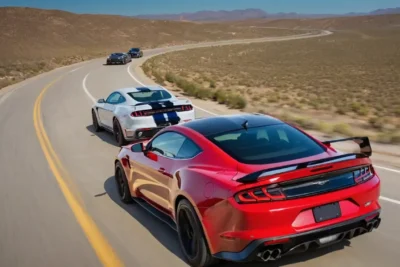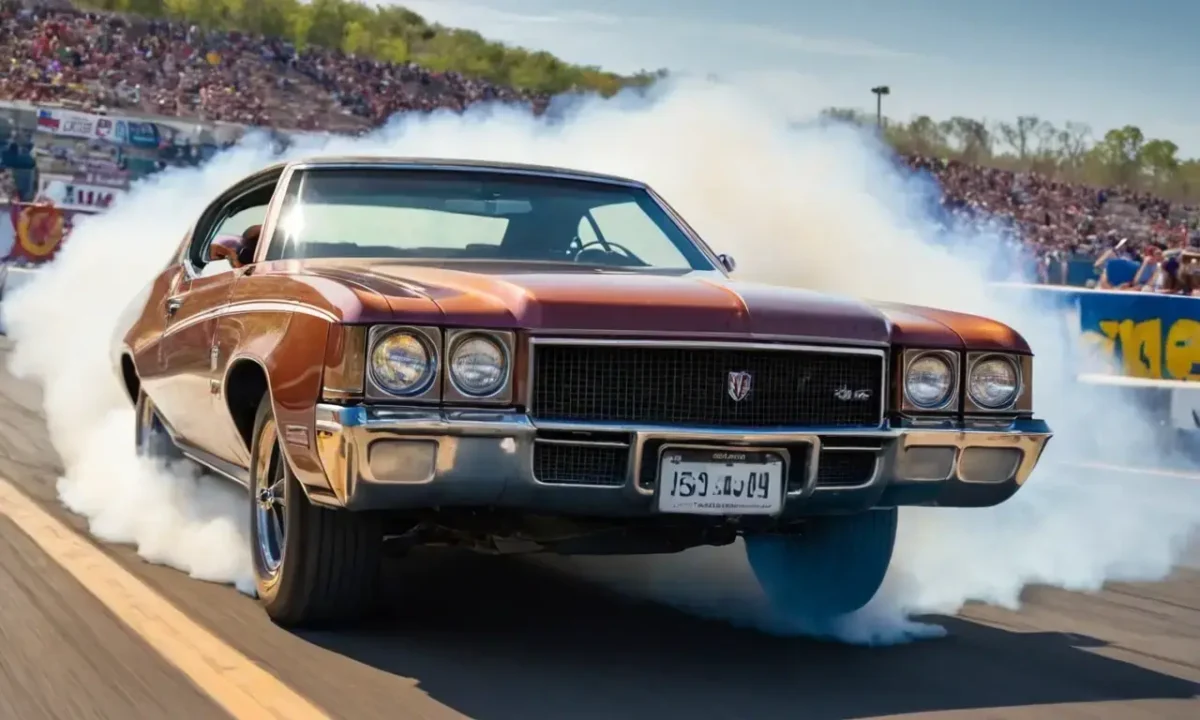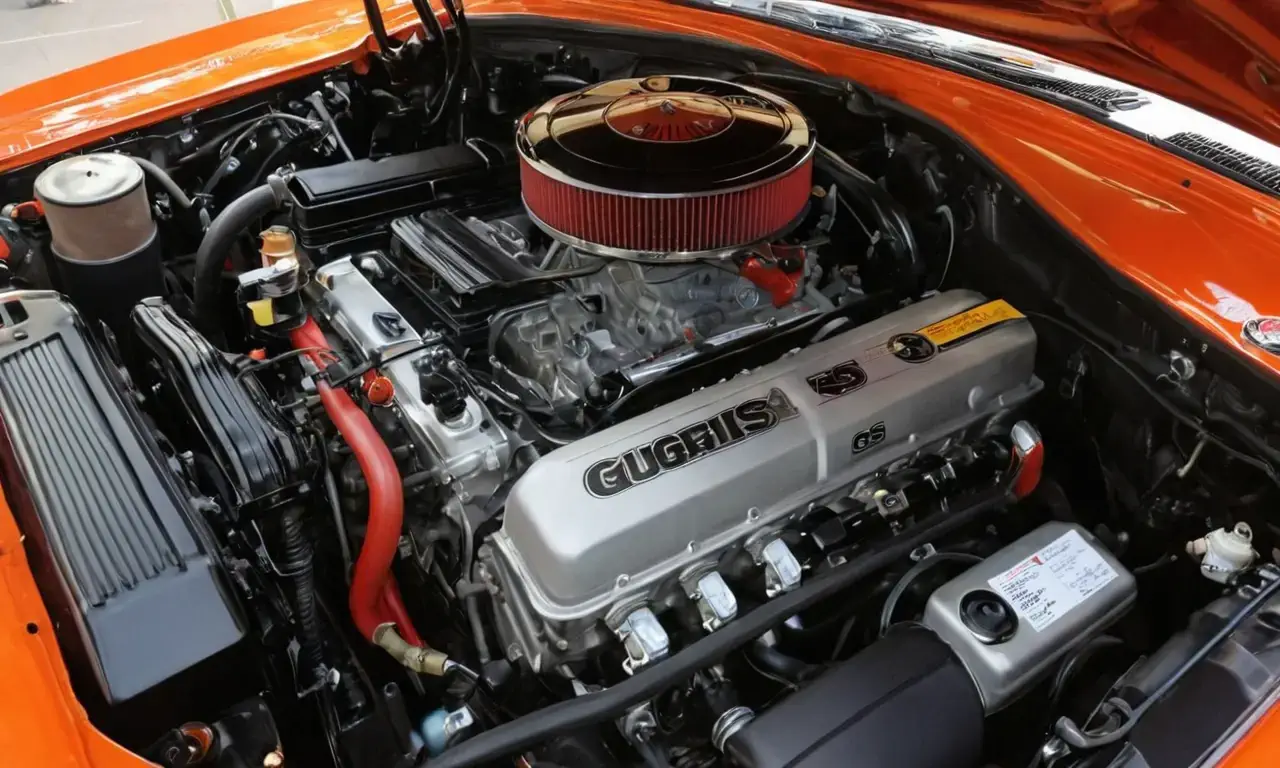
1971 Buick GS 455 Muscle Car Struggles

The 1971 Buick GS 455 was a pivotal moment in automotive history, marking the beginning of the end for Buick's big-block muscle cars. This iconic vehicle, part of the legendary Gran Sport series, faced significant challenges due to stringent emissions regulations and fuel requirements that impacted its performance. Despite these hurdles, the '71 GS 455 remains an intriguing piece of American automotive culture, offering a glimpse into the era when muscle cars ruled the roads.
This article delves into the history, design, performance, engine options, sales impact, legacy, comparison to other models, collector's value, maintenance tips, racing heritage, key specifications, restoration challenges, and the broader context of the muscle car era. By exploring these aspects, we'll uncover why the 1971 Buick GS 455 stands out as a symbol of an era that was both thrilling and tumultuous.
History
The 1971 Buick GS 455 was part of a lineage that began with the introduction of the Gran Sport in 1964. Over the years, this model evolved to become one of the most powerful production cars available, thanks to its large displacement engines. However, as the muscle car era progressed and emissions regulations tightened, manufacturers were forced to adapt their designs to meet these new standards.
The 1971 Buick GS 455 was a product of this adaptation. It featured a smaller engine with reduced compression ratio compared to its predecessors, which led to a decrease in horsepower from 350 to 315. This change significantly impacted the car's performance and appeal to enthusiasts who sought raw power. Despite these modifications, the '71 GS 455 still boasted aggressive styling cues, including functional hood scoops and dual exhausts.
Design and Features
The 1971 Buick GS 455 was designed with a focus on both aesthetics and functionality. Its exterior design featured a bold, aggressive look that set it apart from other models in the market. The car's front grille was larger than usual, housing a prominent hood scoop that not only added visual appeal but also served as an air intake for the engine. This distinctive feature became synonymous with the muscle car era.
Inside, the 1971 Buick GS 455 offered a comfortable and well-appointed interior. It featured premium materials such as vinyl upholstery and wood trim, which gave it a luxurious feel that was typical of American muscle cars from this period. The dashboard was equipped with modern amenities like AM/FM radios and optional air conditioning, making the driving experience more enjoyable for both drivers and passengers.
Performance
The 1971 Buick GS 455 was known for its impressive acceleration capabilities, thanks to its powerful engine. Despite the reduction in horsepower due to emissions regulations, the car still managed to deliver a thrilling driving experience. The Stage 1 package further reduced compression but offered an additional 30 horsepower over the standard model, making it a sought-after option among enthusiasts.
However, the 1971 Buick GS 455 struggled with its quarter-mile times compared to its predecessors and other muscle cars of the era. This was largely due to the engine modifications aimed at meeting emissions standards. Despite this, the car's heavy-duty suspension and wide-oval tires provided a responsive driving experience that many enthusiasts appreciated.
Engine Options

The 1971 Buick GS 455 came with several engine options, each catering to different needs and preferences of its buyers. The base model featured a smaller engine with reduced compression ratio, which resulted in lower horsepower output. However, the Stage 1 package offered an alternative for those seeking more power without compromising on emissions compliance.
The Stage 1 engine was tweaked to produce 345 bhp, making it a popular choice among enthusiasts who wanted a bit more oomph from their muscle car. This option came at a cost, as buyers had to sacrifice some of the car's original performance capabilities in exchange for better fuel efficiency and lower emissions.
Sales and Market Impact
The 1971 Buick GS 455 faced significant challenges in terms of sales due to its reduced power output compared to previous models. The stricter emissions regulations that led to these modifications resulted in a substantial decrease in demand, with sales plummeting by over 50% for the year. This marked a turning point for Buick's muscle car offerings and signaled the beginning of the end for their big-block engines.
Despite this decline, the 1971 Buick GS 455 remains highly sought after among collectors and enthusiasts today. Its unique blend of performance, style, and historical significance makes it an attractive addition to any collection or a thrilling drive for those who are lucky enough to own one.
Legacy
The 1971 Buick GS 455 has left a lasting legacy in the automotive world. It represents a pivotal moment when manufacturers were forced to balance performance with emissions regulations, leading to significant changes in how muscle cars were designed and engineered. This era of compromise paved the way for future generations of vehicles that would prioritize both power and efficiency.
Today, the 1971 Buick GS 455 is celebrated as an iconic piece of automotive history, symbolizing a time when raw power and aggressive styling defined the American muscle car scene. Its influence can be seen in modern muscle cars that continue to blend performance with practicality.
Comparison to Other Models
When comparing the 1971 Buick GS 455 to other models from its era, it stands out for its unique combination of style and performance. While other muscle cars like the Ford Mustang Mach 1 or the Chevrolet Camaro SS offered similar power outputs, the '71 GS 455's aggressive styling and functional design elements set it apart.
However, in terms of raw power, the 1971 Buick GS 455 struggled to keep pace with its competitors. The Stage 1 package helped bridge this gap somewhat, but overall, the car's performance was compromised by emissions regulations. This made it less appealing to enthusiasts who sought maximum power and speed from their muscle cars.
Collector's Value
The 1971 Buick GS 455 has become a highly sought-after collector's item due to its rarity and historical significance. In good condition, these vehicles can fetch high prices at auctions and among collectors. The car's unique blend of performance, style, and nostalgia makes it an attractive addition to any collection.
However, the value of these cars also depends on their originality and condition. Those that have been well-maintained or restored are typically more valuable than those that have been modified or neglected over time. As a result, collectors must be meticulous in their search for the perfect '71 GS 455, ensuring they find a vehicle that not only meets their budget but also preserves its original character.
Maintenance Tips
Maintaining a 1971 Buick GS 455 requires attention to both its mechanical and cosmetic aspects. Due to its age, these vehicles often require more frequent maintenance than newer models. Regular checks on the engine, transmission, and brakes are essential to ensure they continue to function properly.
Additionally, owners should be mindful of the car's originality when making any modifications or repairs. This includes preserving the original paint job, interior components, and other distinctive features that make these vehicles so unique. By doing so, collectors can help maintain the car's value and authenticity over time.
Racing Heritage
The 1971 Buick GS 455 has a rich racing heritage, with many enthusiasts modifying their cars for track use. Despite its reduced power output compared to earlier models, the '71 GS 455 still offers a thrilling driving experience that makes it well-suited for racing and high-performance driving.
However, due to its modifications aimed at meeting emissions standards, the car's performance on the track is somewhat compromised. Nevertheless, enthusiasts continue to find ways to optimize their vehicles for racing, often focusing on engine tuning and suspension upgrades to maximize speed and agility.
Key Specifications
The 1971 Buick GS 455 features a range of specifications that make it an attractive option for collectors and enthusiasts alike. Its engine displacement is 455 cubic inches (7.5 liters), with the standard model producing 315 horsepower and the Stage 1 package offering an additional 30 horsepower.
The car's transmission options include a three-speed automatic or a four-speed manual, providing buyers with choices that cater to different driving styles. Additionally, the 1971 Buick GS 455 features a rear-wheel drive layout, which is typical of muscle cars from this era.
Restoration Challenges
Restoring a 1971 Buick GS 455 can be a complex and time-consuming process due to its age and the modifications made during its production. Owners must carefully research the car's original specifications and ensure that any restoration work preserves its authenticity.
One of the biggest challenges in restoring these vehicles is sourcing original parts, as many components may no longer be available or have been modified over time. This requires owners to be meticulous in their search for authentic materials and to consult with experts who specialize in classic muscle cars.
Conclusion
The 1971 Buick GS 455 represents a pivotal moment in automotive history when manufacturers were forced to balance performance with emissions regulations. Despite its reduced power output, the car remains an iconic piece of American muscle car culture, celebrated for its unique blend of style and historical significance.
Today, collectors and enthusiasts continue to seek out these vehicles, appreciating their rarity and nostalgic value. Whether you're a seasoned collector or just starting your journey into classic cars, the 1971 Buick GS 455 is an exciting addition to any collection, offering a thrilling driving experience that's sure to leave a lasting impression.
Leave a Reply

Related Links